Arxiv | CVF (pdf) | CVF (suppl)
Official PyTorch implementation of the paper: "Patch Craft: Video Denoising by Deep Modeling and Patch Matching."
PaCNet (Patch-Craft Network) is a video and image denoiser.
The link to the presentation of the paper is here.
Our S-CNN network works in a sliding window manner. In order to produce a reconstructed frame it loads seven noisy frames in the input – the corresponding noisy frame and three frames before and after it. In such a way, any frame enters the S-CNN network seven times, once as a processed frame and six more times as an auxiliary frame used for the nearest neighbor search. In simulations reported in the paper, we had a mistake in adding the noise. Instead of injecting noise to the whole video sequence before the processing, we added independent noise to each group of seven consecutive frames (after loading them from memory). In this scenario, each frame enters the network with seven different instantiations of noise, which makes the denoising process somewhat easier. We fixed this bug in the code, and that led to a small degradation of the results. The following tables contain both results: the one (too high) reported in the article and the more recent and correct one. In this repository, we publish both versions of the code: the new code after the bug fix and the old version that achieves a slightly higher PSNR.
| Noise Level |
V-BM4D 1 |
VNLB 2 |
VNLnet 3 |
DVDnet 4 |
FastDVDnet 5 6 |
PaCNet (reported in the paper) |
PaCNet (correct result) |
|---|---|---|---|---|---|---|---|
| 10 | 37.58 | 38.85 | 35.83 | 38.13 | 38.93 | 39.97 | |
| 20 | 33.88 | 35.68 | 34.49 | 35.70 | 35.88 | 36.82 | |
| 30 | 31.65 | 33.73 | -7 | 34.08 | 34.12 | 34.79 | |
| 40 | 30.05 | 32.32 | 32.32 | 32.86 | 32.87 | 33.34 | |
| 50 | 28.80 | 31.13 | 31.43 | 31.85 | 31.90 | 32.20 | |
| Average | 32.39 | 34.34 | - | 34.52 | 34.74 | 35.42 |
Best PSNR marked in bold.
| Method | 10 | 30 | 50 | Average |
|---|---|---|---|---|
| ViDeNN 8 | 37.13 | 32.24 | 29.77 | 33.05 |
| FastDVDnet5 6 | 38.65 | 33.59 | 31.28 | 34.51 |
| PaCNet (reported in the paper) | ||||
| PaCNet (correct result) | 39.96 | 34.66 | 32.00 | 35.54 |
Best PSNR marked in bold.
| Method | 10 | 20 | 30 | 40 | 50 | Average |
|---|---|---|---|---|---|---|
| DVDnet 4 | 36.08 | 33.49 | 31.79 | 30.55 | 29.56 | 32.29 |
| FastDVDnet 6 | 36.44 | 33.43 | 31.68 | 30.46 | 29.53 | 32.31 |
| PaCNet (ours) | 37.06 | 33.94 | 32.05 | 30.70 | 29.66 | 32.68 |

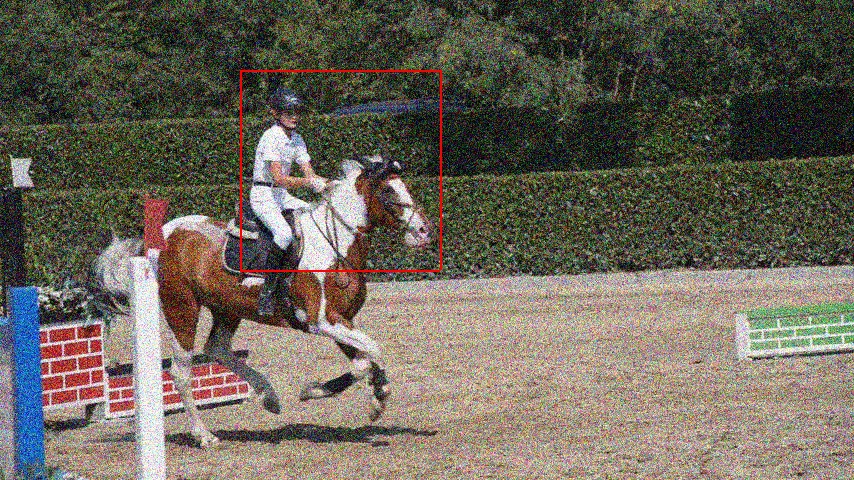
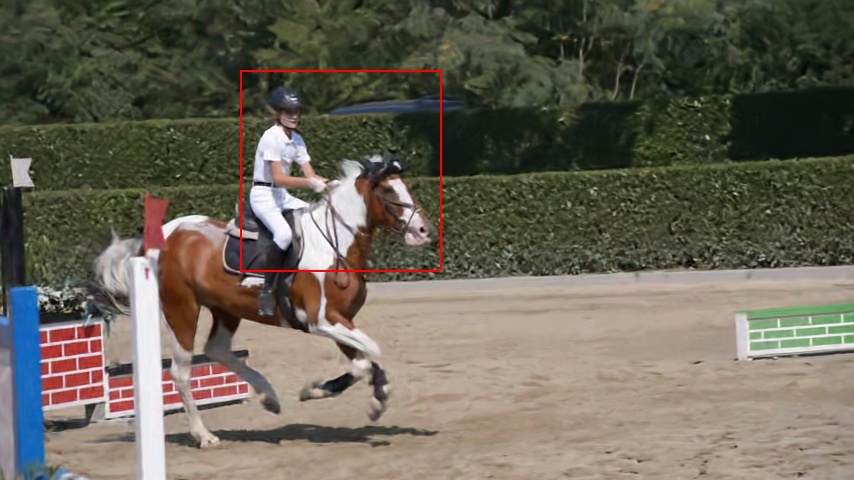
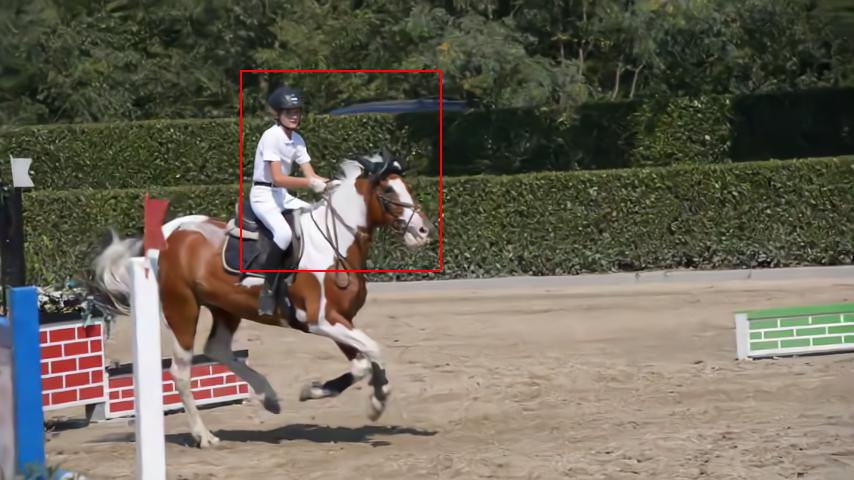
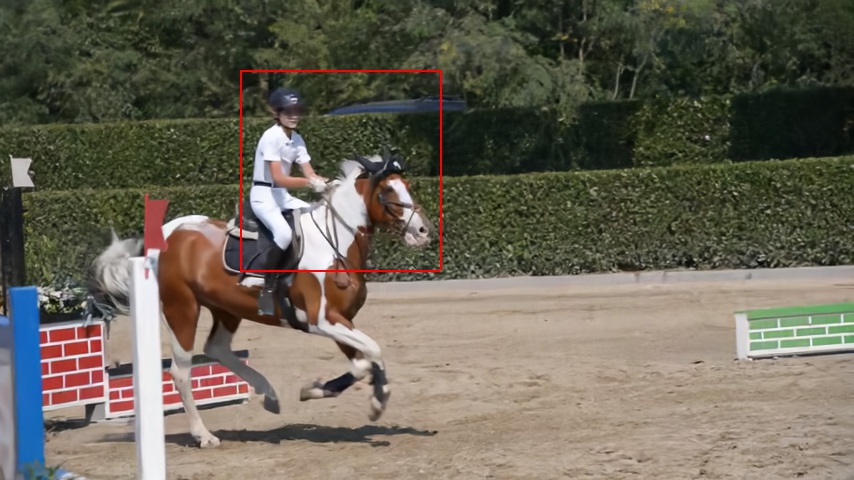
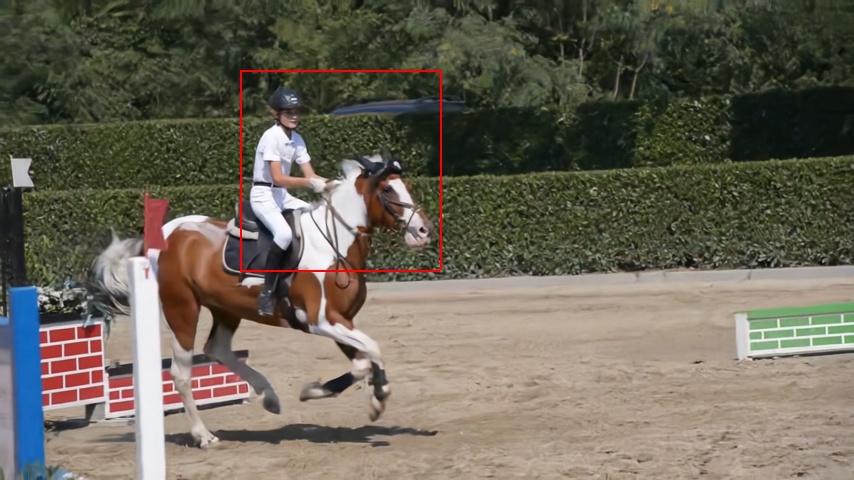
clean noisy with σ = 40 VNLB VNLnet FastDVDnet PaCNet (ours)
PSNR = 28.66dB PSNR = 29.03dB PSNR = 29.27dB PSNR = 27.67dB
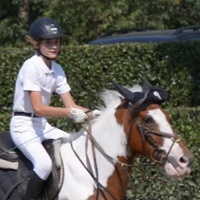
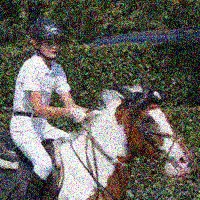
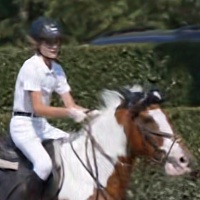
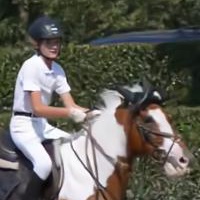
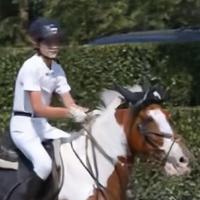
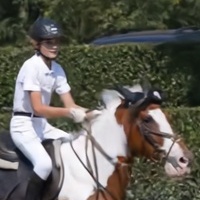
clean noisy with σ = 40 VNLB VNLnet FastDVDnet PaCNet (ours)
PSNR = 27.92dB PSNR = 27.95dB PSNR = 28.23dB PSNR = 28.88dB
PaCNet can be used as a single image denoiser. The following table reports the denoising performance of PaCNet, comparing it with the most similar image denoiser LIDIA 9.
| Method | 15 | 25 | 50 | Average |
|---|---|---|---|---|
| LIDIA 9 | 34.03 | 31.31 | 27.99 | 31.11 |
| PaCNet (ours) | 33.95 | 31.22 | 27.93 | 31.03 |
This code was tested with python 3.9, cuda 11.4 and pytorch 1.9 on GeForse GTX 1080 Ti and Quadro RTX 8000 (for video denoising with option gpu_usage=2).
- numpy
- opencv
- matplotlib
- torch
python -m pip install -r code/requirements.txt
python code/process_video_sequence.py --in_folder <in_folder> --file_ext <file_ext> --sigma <sigma> --clipped_noise <clipped_noise> [--save_jpg] --jpg_out_folder <jpg_out_folder> [--save_avi] --avi_out_folder <avi_out_folder> --gpu_usage <gpu_usage> [--plot]
- in_folder - path to a test video sequence. Default: ./data_set/davis/horsejump-stick/
- file_ext - file extension: {jpg, png}. Default: jpg
- sigma - noise sigma.
For AWGN: {10, 20, 30, 40, 50}.
For clipped Gaussian noise: {10, 30, 50}
Default: 20 - clipped_noise - noise type: {0 - AWGN, 1 - clipped Gaussian}
- [--save_jpg] (flag) - save the denoised video as JPG frames
- jpg_out_folder - path to folder for saving JPG frames. Default: ./output/videos/jpg_sequences/demo/
- [--save_avi] (flag) - save the denoised video as AVI file
- avi_out_folder - path to folder for saving AVI file. Default: ./output/videos/avi_files/demo/
- gpu_usage - GPU usage:
0 - use CPU,
1 - use GPU for nearest neighbor search,
2 - use GPU for whole processing, requires large GPU memory (about 20-30GB)) - [--plot] (flag) - plot a frame from the processed video sequence
python code/process_video_sequence.py --gpu_usage 1 --save_jpg --save_avi
denoise_video_sequence(<noisy_vid>, <vid_name>, <sigma>, [clipped_noise], [gpu_usage], [silent])
- noisy_vid (required) - noisy video sequence
- vid_name (required) - video name
- sigma (required) - noise sigma.
For AWGN: {10, 20, 30, 40, 50}
For Clipped Gaussian noise: {10, 30, 50} - clipped_noise (optional) - 0 - AWGN, 1 - clipped Gaussian noise
- gpu_usage (optional) - GPU usage:
0 - use CPU,
1 - use GPU for nearest neighbor search,
2 - use GPU for whole processing, requires large GPU memory (about 20-30GB)
- denoised_vid - denoised video sequence
- denoising_time - denoising time
python code/process_video_sequence.py --in_folder <in_folder> --file_ext <file_ext> --sigma <sigma> --clipped_noise <clipped_noise> [--save_jpg] --jpg_out_folder <jpg_out_folder> [--save_avi] --avi_out_folder <avi_out_folder> --gpu_usage <gpu_usage> --max_frame_num <max_frame_num> [--silent]
- in_folder - path to a video set. Default: ./data_set/davis/
- file_ext - file extension: {jpg, png}. Default: jpg
- sigma - noise sigma.
For AWGN: {10, 20, 30, 40, 50}.
For clipped Gaussian noise: {10, 30, 50}
Default: 20 - clipped_noise - noise type: {0 - AWGN, 1 - clipped Gaussian}
- [--save_jpg] (flag) - save the denoised videos as JPG frames
- jpg_out_folder - path to folder for saving JPG frames. Default: ./output/videos/jpg_sequences/set/
- [--save_avi] (flag) - save the denoised videos as AVI files
- avi_out_folder - path to folder for saving AVI file. Default: ./output/videos/avi_files/set/
- gpu_usage - GPU usage:
0 - use CPU,
1 - use GPU for nearest neighbor search,
2 - use GPU for whole processing, requires large GPU memory (about 20-30GB) - max_frame_num - limit for maximum number of denoised frames in each video sequence in the set. Default: 85.
- [--silent] (flag) - don't print "done" every frame.
python code/process_video_set.py --sigma <sigma> --gpu_usage 1 --save_jpg --save_avi
python code/process_video_set.py --sigma <sigma> --in_folder "./data_set/set8/" --file_ext png --gpu_usage 1 --save_jpg --save_avi
For reproducing the results with the bug during adding noise (higher PSNR that is reported in the paper), run
python code/process_video_set_with_bug.py --sigma <sigma> --gpu_usage 1 --save_jpg --save_avi
python code/process_image.py --in_folder <in_folder> --im_name <im_name> --out_folder <out_folder> --sigma <sigma> --gpu_usage <gpu_usage> [--plot] [--save]
- in_folder - input folder. Default: ./data_set/cbsd68/
- im_name - image name. Default: 119082.png
- sigma - noise sigma: {15, 25, 50}. Default: 25
- [--save] (flag) - save the denoised image
- out_folder - output foldeer. Default: ./output/images/demo/
- gpu_usage - GPU usage:
0 - use CPU,
1 - use GPU for nearest neighbor search,
2 - use GPU for whole processing (requires about 10GB GPU memory) - [--plot] (flag) - plot a frame from the processed video sequence
python code/process_image.py --gpu_usage 1 --save
denoise_image(<noisy_im>, <sigma>, [gpu_usage])
- noisy_im (required) - noisy image
- sigma (required) - noise sigma: {15, 25, 50}
- gpu_usage (optional) - GPU usage:
0 - use CPU,
1 - use GPU for nearest neighbor search,
2 - use GPU for whole processing (requires about 10GB GPU memory)
- denoised_im - denoised image
- denoising_time - denoising time
python code/process_image_set.py --in_folder <in_folder> --out_folder <out_folder> --sigma <sigma> --gpu_usage <gpu_usage> [--save]
- in_folder - input folder. Default: ./data_set/cbsd68/
- sigma - noise sigma: {15, 25, 50}. Default: 25
- [--save] (flag) - save the denoised images
- out_folder - path to folder for saving denoised images. Default: ./output/images/set/
- gpu_usage - GPU usage:
0 - use CPU,
1 - use GPU for nearest neighbor search,
2 - use GPU for whole processing (requires about 10GB GPU memory)
python code/process_image_set.py --gpu_usage 1 --save
If you use this code for your research, please cite our paper:
@InProceedings{Vaksman_2021_ICCV,
author = {Vaksman, Gregory and Elad, Michael and Milanfar, Peyman},
title = {Patch Craft: Video Denoising by Deep Modeling and Patch Matching},
booktitle = {Proceedings of the IEEE/CVF International Conference on Computer Vision (ICCV)},
month = {October},
year = {2021},
pages = {2157-2166}
}
Footnotes
-
Matteo Maggioni, Giacomo Boracchi, Alessandro Foi, and Karen Egiazarian. Video denoising using separable 4-D nonlocal spatiotemporal transforms. ↩
-
Pablo Arias and Jean-Michel Morel. Video denoising via empirical bayesian estimation of space-time patches. ↩
-
Axel Davy, Thibaud Ehret, Jean-Michel Morel, Pablo Arias, and Gabriele Facciolo. A non-local cnn for video denoising. ↩ ↩2 ↩3
-
Matias Tassano, Julie Delon, and Thomas Veit. Dvdnet: A fast network for deep video denoising. ↩ ↩2
-
FastDVDnet 6 PSNR values are obtained from the released code. The rest of the values reported in the tables are taken from 6. ↩ ↩2
-
Matias Tassano, Julie Delon, and Thomas Veit. Fastdvdnet: Towards real-time deep video denoising without flow estimation. ↩ ↩2 ↩3 ↩4 ↩5
-
The PSNR value for VNLnet 3 with σ = 30 is missing as 3 did not provide a model for this noise level. ↩
-
Michele Claus and Jan van Gemert. Videnn: Deep blind video denoising. ↩
-
Gregory Vaksman, Michael Elad, and Peyman Milanfar. Lidia: Lightweight learned image denoising with instance adaptation. ↩ ↩2





